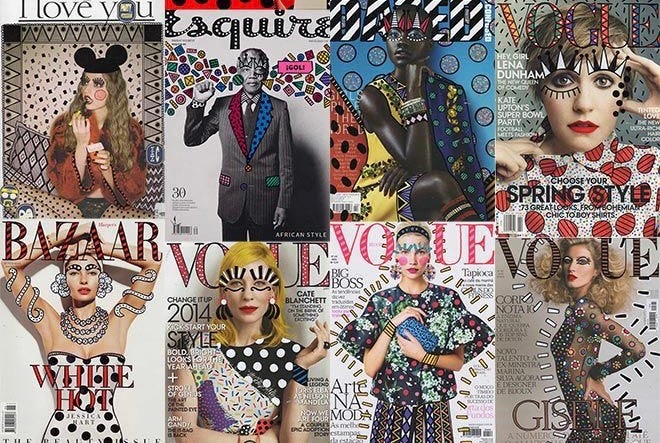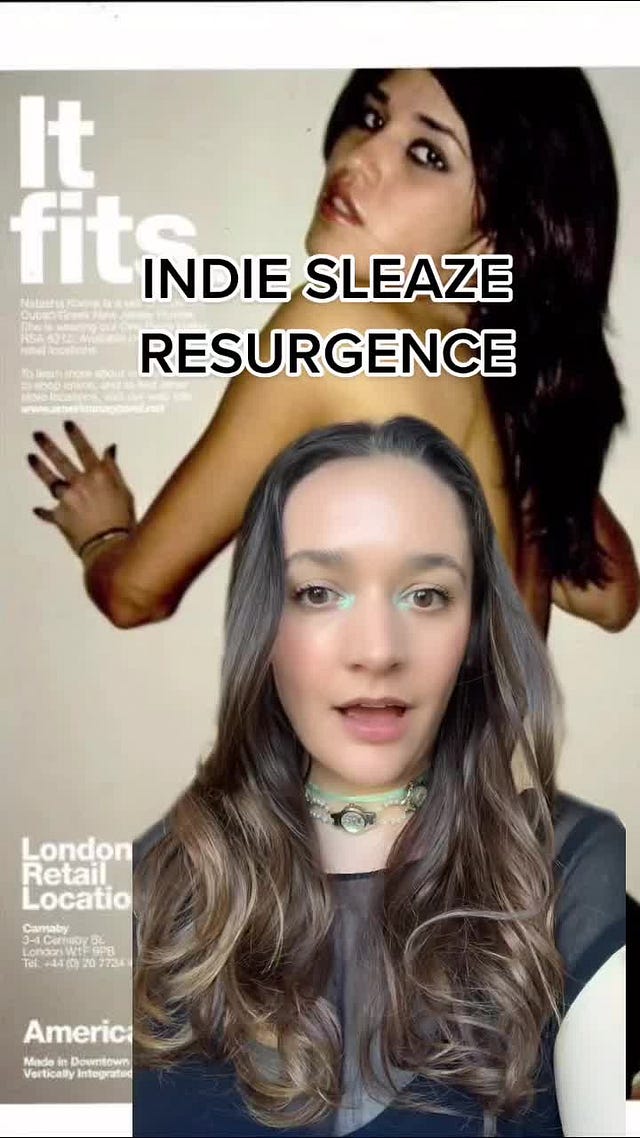Has Fashion Criticism Become Democratised and Trendy?
Bye bye gate kept fashion journalism, hello insider insight into the industry
I have exciting news to share: You can now read Fashion Tingz in the new Substack app for iPhone!

Being a journalist, writer, editor, and any other name you can think of for someone that puts pen to paper for a living, witnessing the evolution and transformation of journalism over the past few years has been nothing short of a whirlwind. I’ve had a front-row seat to the tit-for-tat and the shit talk that goes on behind the scenes and damn, the industry is mad. Like, really really mad. But whatever your personal feelings are about the situation you can’t deny that journalism is going digital. And with that, a new era of fashion critics and connoisseurs is born. But how good are they at what they do? And what does this mean for the future of the industry?
Unless you’ve been living under a rock for the last few years then you’ll be well aware that modern fashion journalism has become incredibly dependent on clicks and likes. So much so that fashion reviews, critiques and new narratives have managed to amass over 7 billion views on the #fashiontok TikTok page, with a new generation of digital critics and connoisseurs born in the process.
A surge in fashion critics and the bottomless content machine
On the one hand, the recent surge in fashion aficionados is a good thing. More diversity in fashion, wherever you interact with it, leads to fresh perspectives on trends, cultural appropriation, systemic issues, gender fluidity, sustainability, sizeist prejudices and a ton of other nuanced conversations that need to be happening. A new generation of fashion critics is modernising fashion journalism, making it accessible and engaging for younger digitally savvy generations, vibes I'm here for.
But to keep up with relentless trend cycles and the bottomless black hole that is social media, fashion criticism has taken on a new lease of life that focuses more on the shareability factor rather than providing any value or substance to its audience. And as these new fashion critics become powerhouse content machines this can often diminish their ability to engage and think critically, with high follower counts more important than providing educational content or insightful insider information on an industry that doesn’t exactly welcome outsiders with open arms. Where there is social media clout, the substance doesn’t always follow.
Wherever you engage with fashion the most on social media is probably going to affect the type of content you see and the way you view fashion. Now no shade to the Instagram and TikTok fashion peeps, but somehow when I want a fresh fashion perspective that's research-based, that has a viewpoint which is archival, educational and shrewd, sprinkled with a little bit of humour and sass, I lean towards Twitter (though who knows how long that’ll last with Musk now at the reigns, yikes).
As a platform, Twitter can create fashion content that's open to commentary and discussion, and the Twitter fashion girlies and guys aren’t in for the exposure which makes it hard for businesses and brands to profit off of - which is probably why you don't hear about Twitter fashion critics as much. Just to note, some of my favourite fashion-based Twitter accounts to follow are @dieworkwear and @vvfriedman. Words are these people's safe space on Twitter, and they are definitely worth paying attention to.
The democratisation of fashion journalism and a new era of critics
It may sound like I'm here to give social media fashion crowds a bad name, but I'm not (side note: TikTok is a platform I'm debating about experimenting with myself so there's a catch-22 for ya). Many of the current TikTok, YouTube and Instagram fashion critics, journalists, tastemakers and industry insiders have a wealth of knowledge and a background in the fashion industry which makes their content stand out as it goes beyond the usual clickbaity sales-led material we’ve become so used to.
Mandy Lee, otherwise known as @olderloserinbrooklyn on TikTok, coined the term ‘Indie Sleaze’ which many major publications caught wind of and started using. Almost a year after her post went viral, she quit her job in trend forecasting to become a full-time creator and freelance writer. Over on YouTube journalist Odunayo Ojo, or Fashion Roadman to you and me, explains the inner goings on of the fashion industry and he even trialled a print magazine, the Fashion Archive, which sold out on the first day. And on Instagram, French-Tunisian fashion critic @osamachabbi reviews fashion shows with comprehensive analysis and thought-provoking commentary through the lens of his unique worldview, and is now a contributor to SHOWstudio.
While social media will always be full of trends, haul videos, and unrealistic expectations of what fashion should look like, a new era of critics is tasting the sweet nectar of success and are using their relevant social channels as a way to get a head start working in fashion on a wider scale. Many TikTok pros and IG enthusiasts have snagged fruitful brand partnerships and campaigns, freelance gigs creating content and some have even managed to get lucrative positions as full-time staffers. And who can blame them, you would if you could right?
Yes, fashion criticism is becoming more democratised which is great, and in the process a tad trendy, but that doesn’t have to be such a bad thing. These new figures within fashion that you’ll stumble across when scrolling are not only generating new forms of content in line with people's changing attitudes, they are part of a wider fashionable shift that's breaking down hard-to-decipher subjects in a relatable, fun and innovative way. They are revamping the industry by making it open to anyone and everyone, and I'm 1000% here for that.
What are your thoughts on modern fashion journalism? What fashion critics do you follow and on what social platforms? Where do you think fashion journalism is headed next?
Share this post, feel free to comment, and subscribe to Fashion Tingz to keep the conversation going.








